How to find your WooCommerce customer lifetime value
In this article, we will learn how to find your WooCommerce customer lifetime value and search and filter your WooCommerce customers based on their lifetime value.
What is customer lifetime value (LTV)?
Customer lifetime value (CLV) is a metric in e-commerce that calculates the total projected revenue a business expects from a single customer over their entire engagement with the company. It’s determined by analyzing the total purchases, frequency of transactions, and the average order value made by a customer within a specific period.
Why is lifetime value important for your WooCommerce store?
Lifetime Value (LTV) is crucial for your WooCommerce store because it measures the total revenue a customer generates over their entire relationship with your business. It is important because it lets you find your most loyal customers and how much they spend on your products or services. Understanding LTV helps you allocate marketing resources effectively, focusing on retaining high-value customers and improving long-term profitability. By increasing LTV, you can ensure sustainable growth and make informed decisions about customer acquisition and retention strategies.
Here are some of the benefits of knowing your customer’s lifetime value:
- Find your most valuable customers.
- Learn how much your customers spend on average
- Improve your customer service
- Learn whether to focus on customer acquisition or creating more customer loyalty.
- Estimate how much you can spend on your marketing and customer acquisitions.
- Create more effective customer segmentation
- Improve your customer loyalty

The Lifetime Value field in Users Insights
The WooCommerce module of Users Insights provides a field called “Lifetime value.” This field is available in the user table and the Users Insights smart filters. This field gives you a reasonable estimate of the total money spent by each customer. When measuring your customer value, the lifetime value field is slightly more accurate than the number of orders field.
Although the number of orders can show you the customers with the most purchases, they might not be your most valuable customers, as they might only buy the cheapest products. For example, a customer who has bought two products at the price of $100 is more valuable (based on the money spent) than a customer who has bought five products at $10.
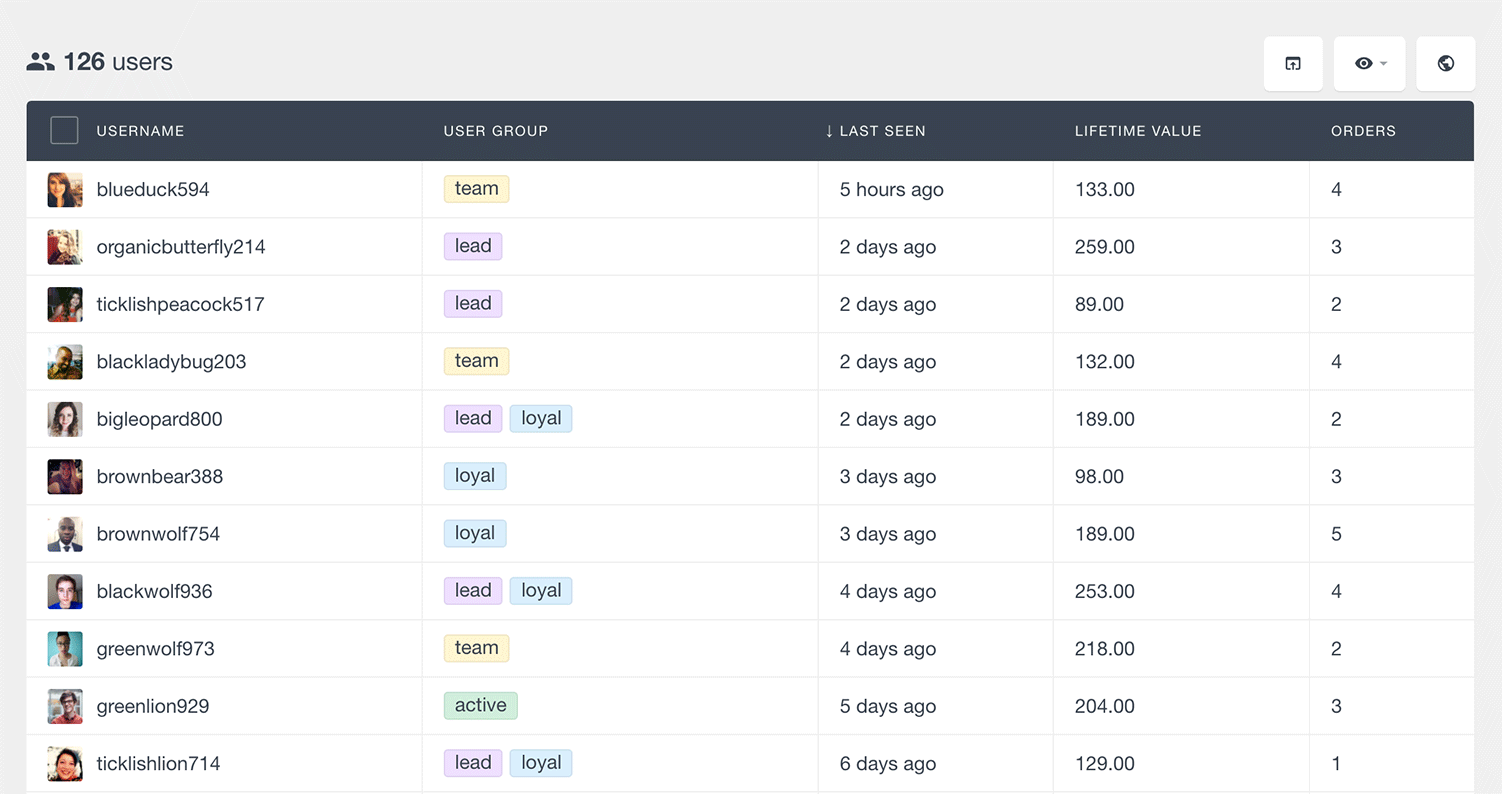
If you want to order your customers list by their smallest lifetime value, click on the lifetime value title again.
Filtering your customers by their lifetime value
The lifetime value field is also available in the Users Insights smart filters. If you click the “Add Filter” button and select the Lifetime Value option from the list, you will get a list of all the available filters for this field. The first filter option is “Lifetime Value is”. As the name suggests, this filter allows you to set an exact value for the lifetime value filter to show all the customers whose lifetime value is equal to the specified value.
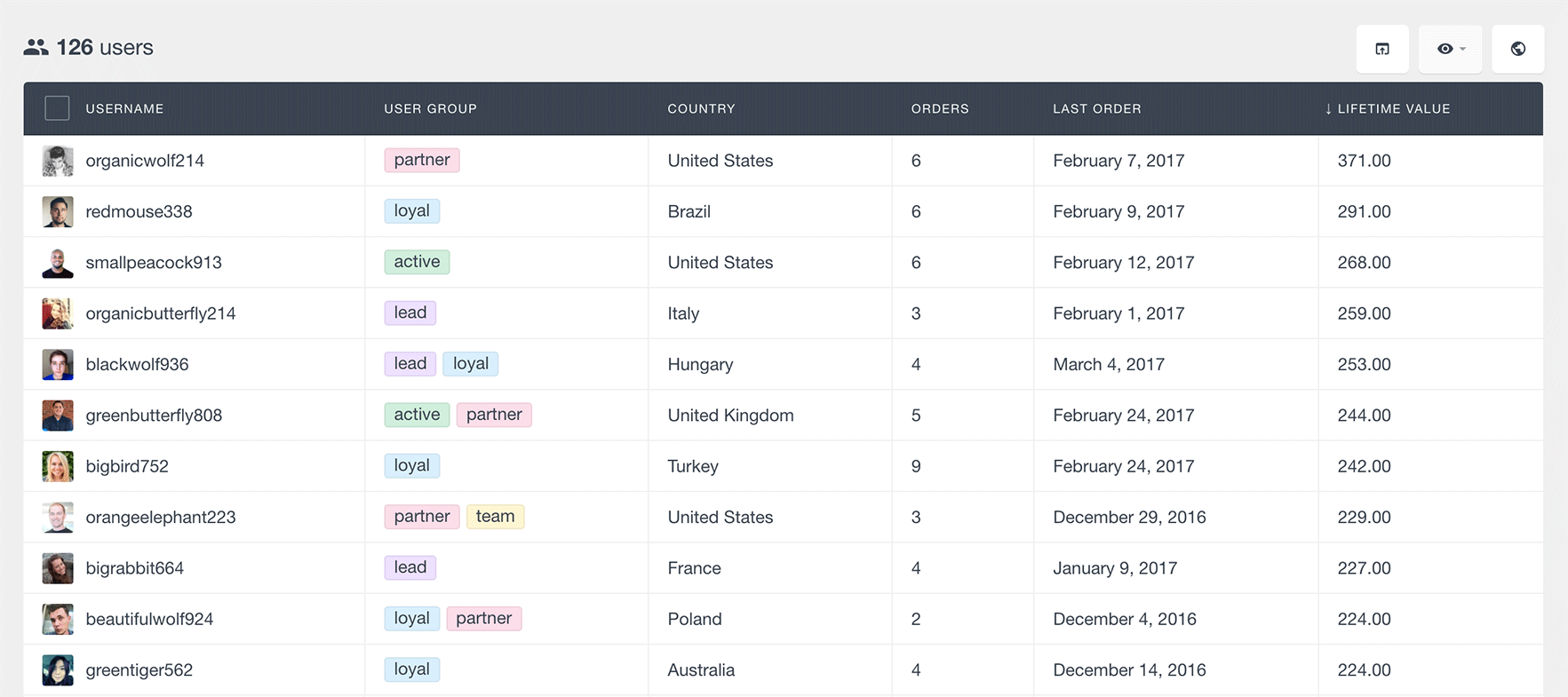
If you want to order your customers list by their smallest lifetime value, just click on the lifetime value title one more time.
Filtering your customers by their lifetime value
The lifetime value field is also available in the Users Insights smart filters. If you click on the “Add Filter” button and select the Lifetime Value option from the list, you will get a list of all the available filters for this field. The first filter option is “Lifetime Value is”. As the name suggests, this filter allows you to set an exact value for the lifetime value filter so that you can show all the customers whose lifetime value is equal to the set value.
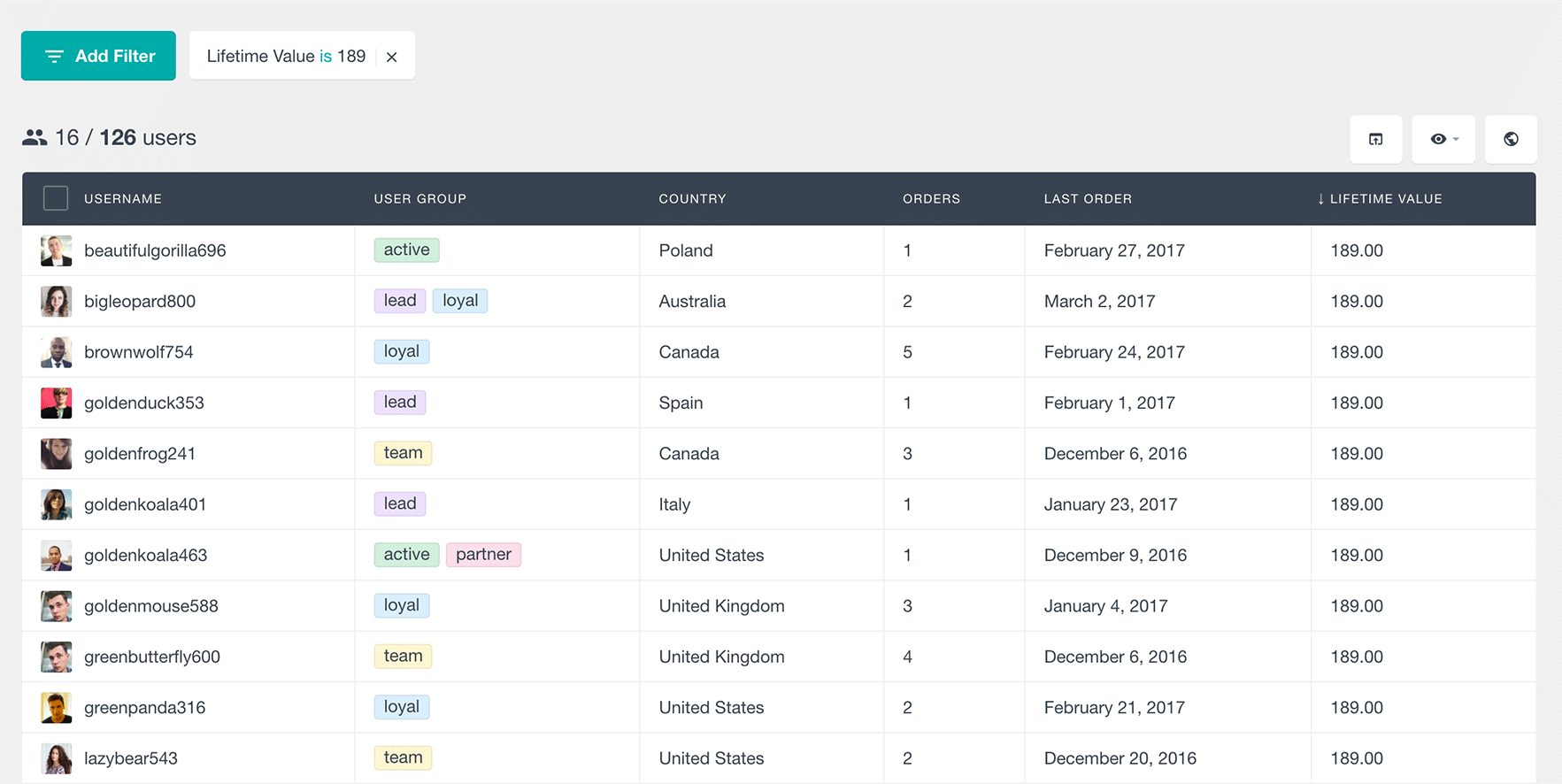
The second option is “Lifetime Value is bigger than”. This option allows you to set a minimum value to the lifetime value filter. This is helpful if you want to show all the customers whose lifetime value is bigger than a certain number. An example will be all the customers whose lifetime value is greater than $100.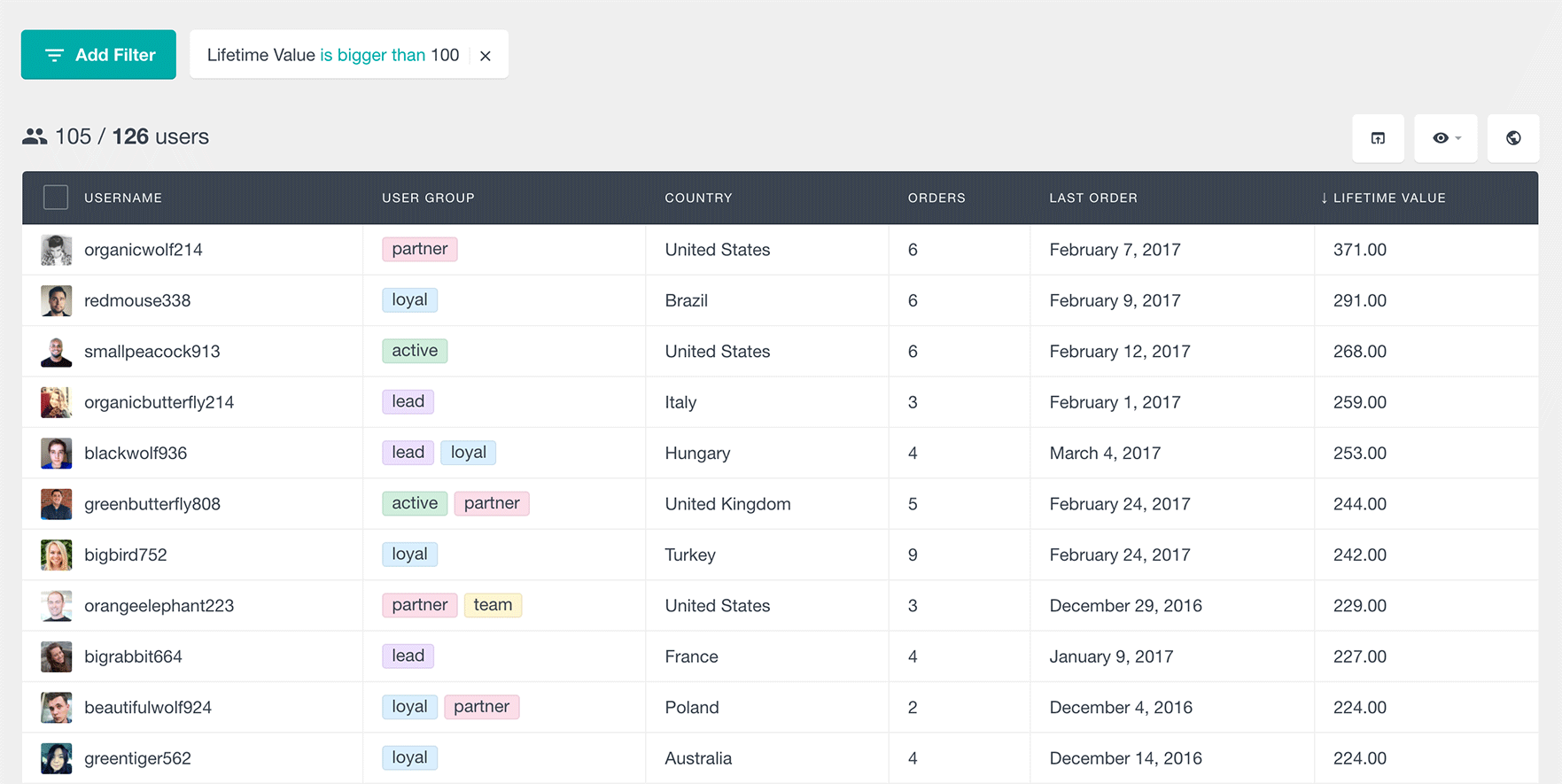
The last option is “Lifetime Value is less than”. This allows you to set a top limit to your lifetime value filter. This filter can be useful if you want to get a list of all the customers whose lifetime value is smaller than a specific amount—for example, a list of all the customers whose lifetime value is smaller than $90.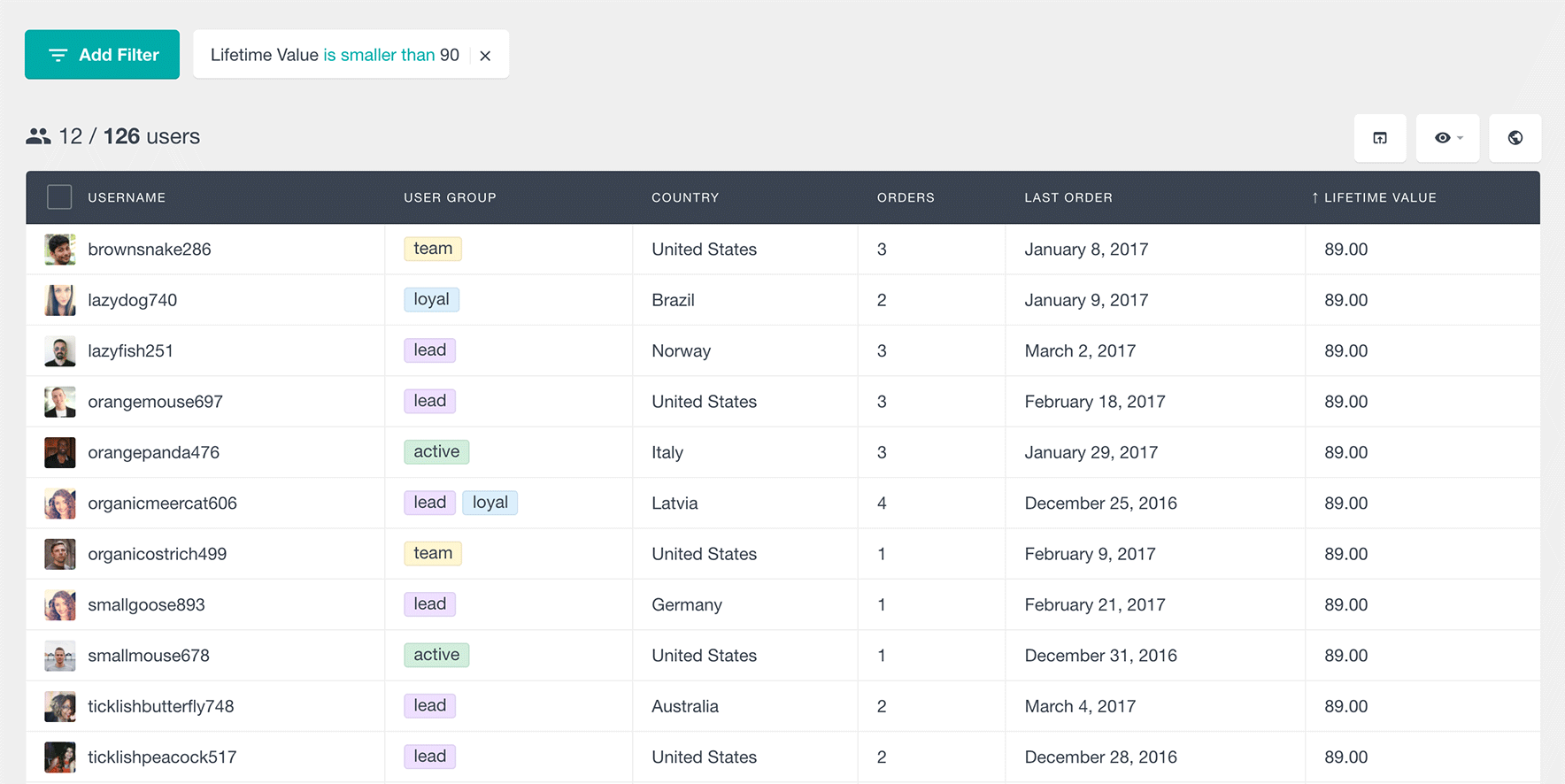
Combining the lifetime value with other filters
Since the Users Insights filters are stackable, it is very easy to apply multiple filters at once and get more specific segments of your WooCommerce customers. Here is an example of all the customers who have ordered in the last 30 days and have a lifetime value greater than $100.
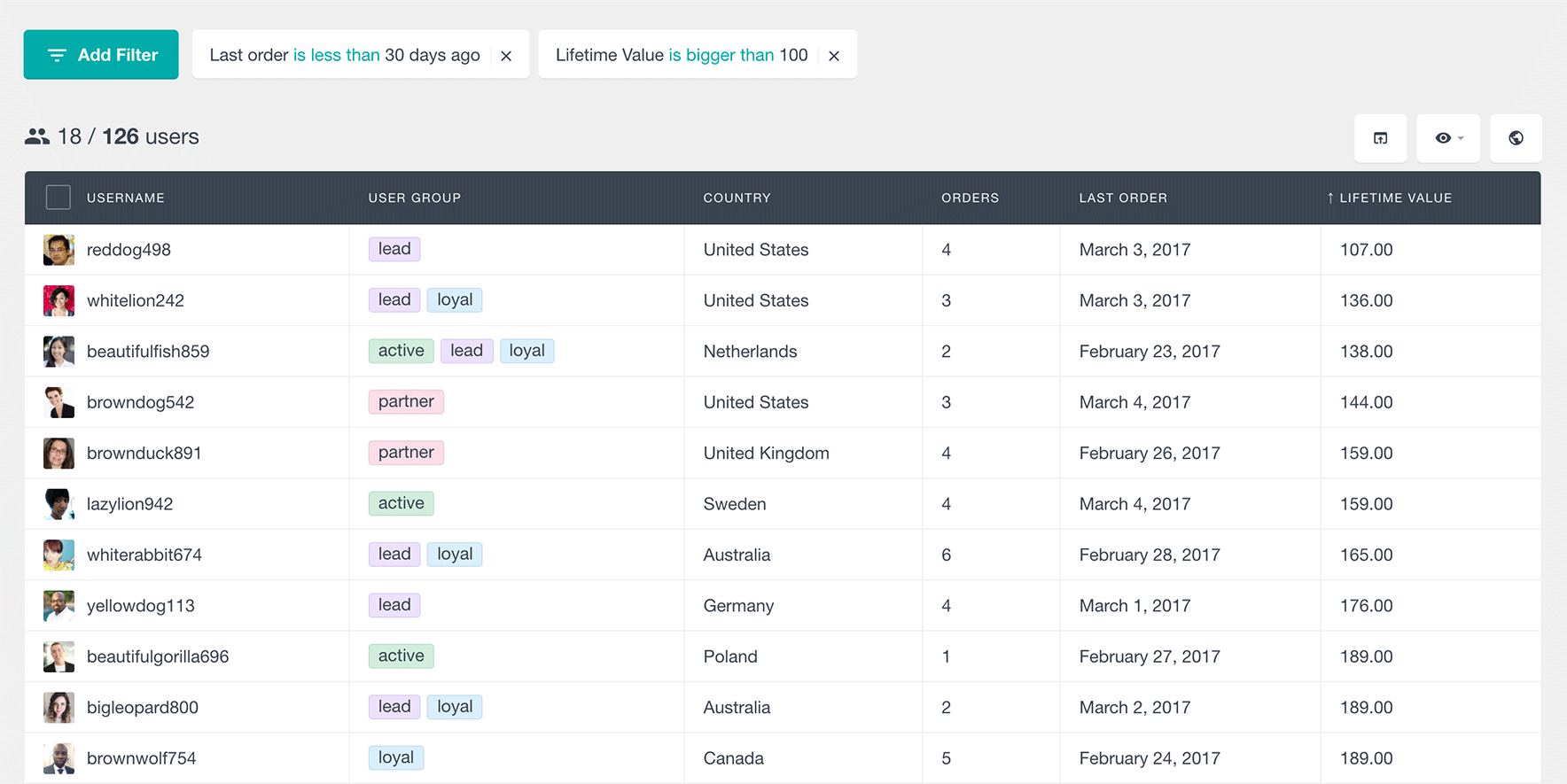
If you want to get the list of your WooCommerce customers whose lifetime value is bigger than $50 but have not been active recently, you can do this by combining the lifetime value filter with the Last Seen filter:

Or if you want to see all the loyal customers who have purchased during this holiday season, you can add the filters “Last order date is after” and “Last order date is before”:
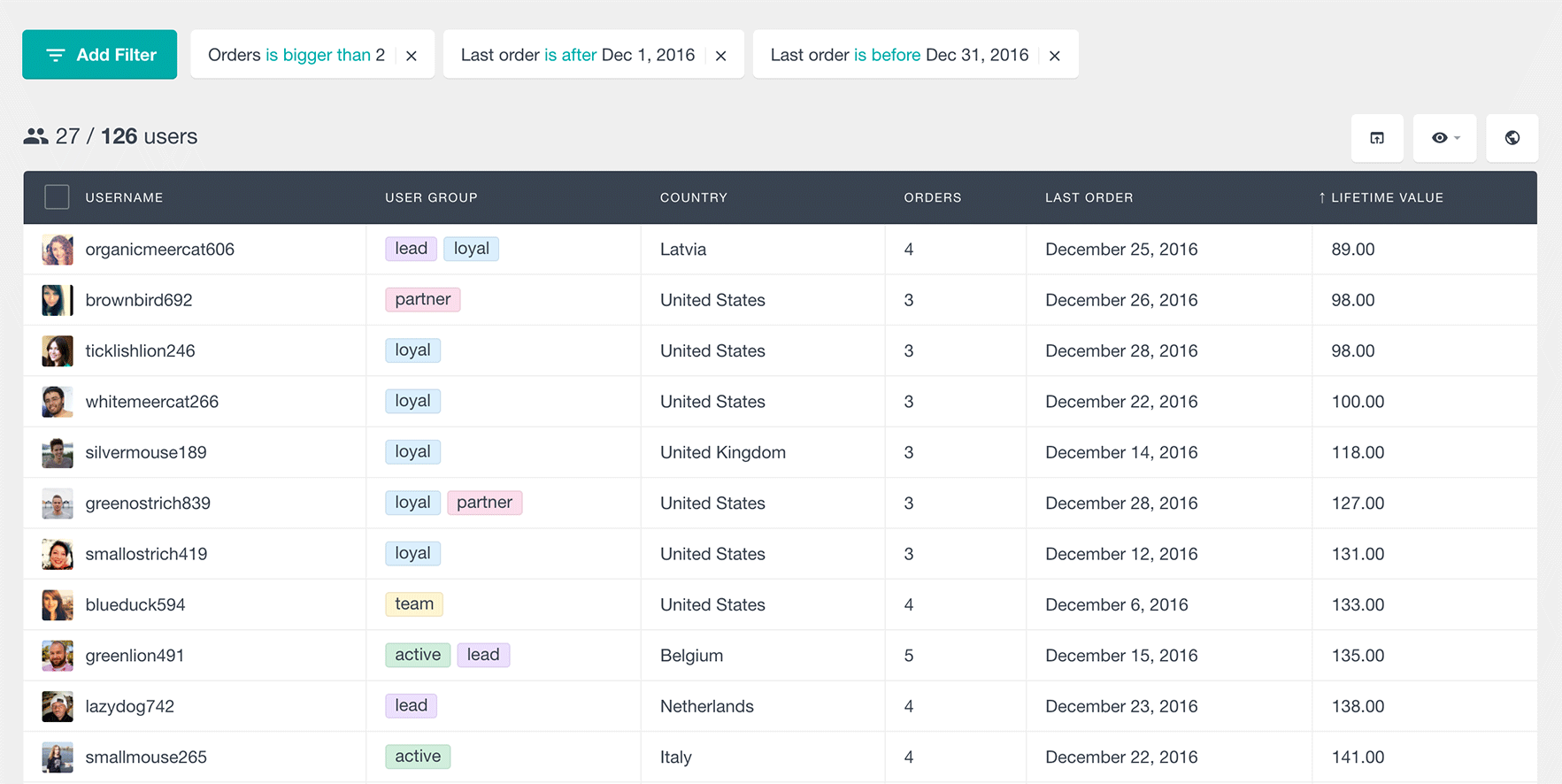
Here is a short video showing you how you can filter and search your WooCommerce customers by their lifetime value:
Exporting the list of your most valuable WooCommerce customers
Thanks to the export feature of Users Insights, you can easily export a list with all of your most valuable customers and their email addresses. You can then use this list to send a custom email campaign or email them to thank you for being a regular customer of ours.
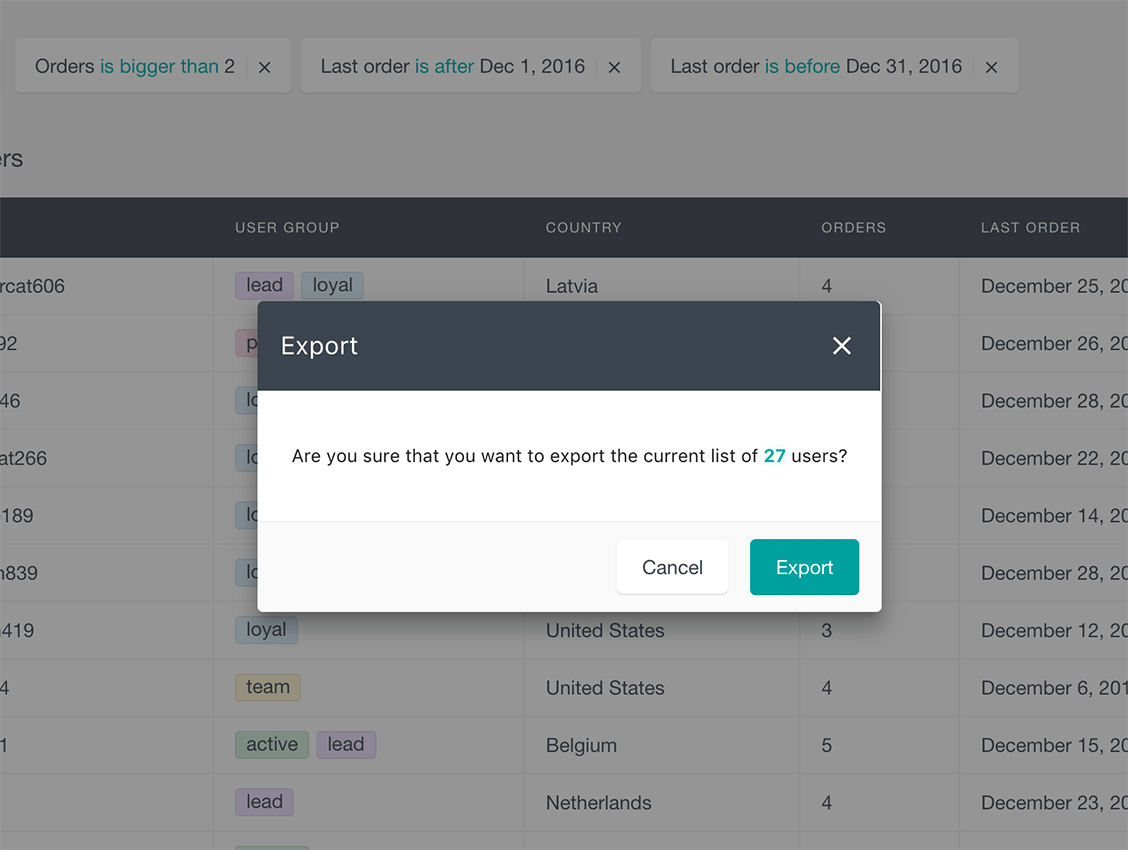
Calculating LTV in WooCommerce
The average lifetime value is a number that represents the average LTV of all of your customers. The simplest way to calculate the average lifetime value of your WooCommerce store is simply by dividing the sum of all of your customer lifetime values by the total number of customers.
Average Lifetime Value = Sum of all customer lifetime values / Total number of customers
Using the custom export feature, you can easily calculate with spreadsheet software, such as Excel or Google Spreadsheets. To illustrate this, let’s first create a custom export that includes only the necessary fields. For this example, we’ll only use the lifetime value field data, so we’ll hide the rest of the fields and click on the export button. Once the CSV file is exported and downloaded on our computer, we can open the file with our favorite spreadsheet software. For this case, I’m going to use Google Spreadsheets. To create a simple formula that will calculate the average LTV, select an empty cell and enter:
=SUM(B:B)/COUNTUNIQUE(A:A)
where B is the LTV column and A is the column containing the customer username. Then just press enter to apply the formula.
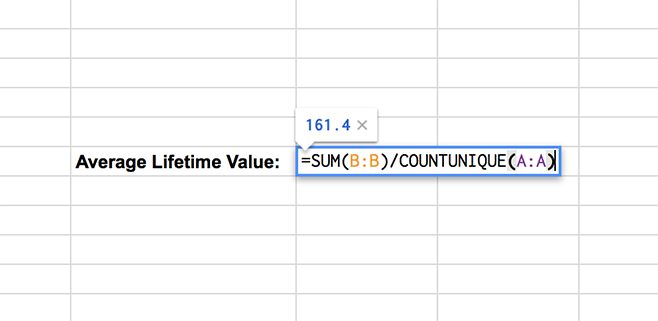
This will show you the average LTV number for your WooCommerce store. Of course, this number is not fixed for your store and will change with time, but it’s a good indicator of your overall performance.
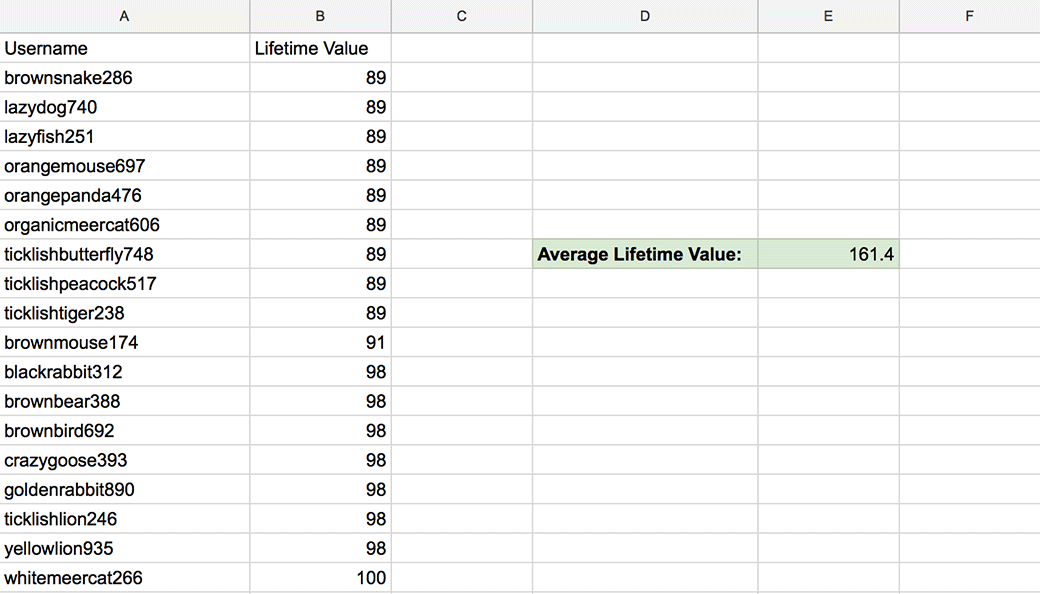
Calculating LTV in WooCommerce with adjusting for costs
To calculate Customer Lifetime Value (LTV) in WooCommerce, you’ll need to identify key metrics:
- Customer Acquisition Cost (CAC),
- Average Order Value (AOV),
- Customer Lifetime, and
- Customer Retention Rate.
First, determine your CAC, which is the cost of acquiring a new customer. Next, calculate the AOV by averaging the amount spent per transaction. Then, estimate the Customer Lifetime, which is the average time a customer remains active. Finally, determine the Customer Retention Rate, which is the percentage of returning customers. Use these metrics to compute LTV and gain insights into your customers’ long-term value.
And that it’s! Now you know how to find your most valuable customers by using the lifetime value filters of the WooCommerce module of Users Insights.
What is a Good Customer Lifetime Value?
Determining a good customer lifetime value is an essential metric for e-commerce businesses, as it can help you determine how much you can afford to spend on acquiring new customers. If your customer LTV is high, you can afford to spend more on acquisition, as you know that each new customer will bring in a lot of revenue over time.
The ideal CLV for your business will depend on numerous factors and your business type. Your Customer Lifetime Value (CLV) should be at least twice your Customer Acquisition Cost (CAC). This is because your LTV needs to cover all the costs related to each customer, such as marketing, shipping, customer service, and the technology you use.
The lifetime value (LTV) in a WooCommerce store is assessing the total worth of an average customer over their entire customer purchase history. Understanding this value is crucial for store owners as it offers insights into customer spending patterns, aiding in evaluating the overall profitability derived from the customer base. By understanding the LTV in WooCommerce, store owners can make informed decisions regarding marketing strategies, marketing campaigns, customer retention tactics, and resource distribution.
What is customer retention?
In WooCommerce, customer retention refers to the strategies and practices used to encourage repeat purchases and foster long-term loyalty among customers. It involves understanding customer behavior, providing excellent service, and implementing marketing techniques like personalized offers and loyalty programs. Effective customer retention helps increase the lifetime value of customers and contributes to the sustainable growth of the online store.
We hope this article was helpful and you now have better tools to manage and understand your WooCommerce customers.
